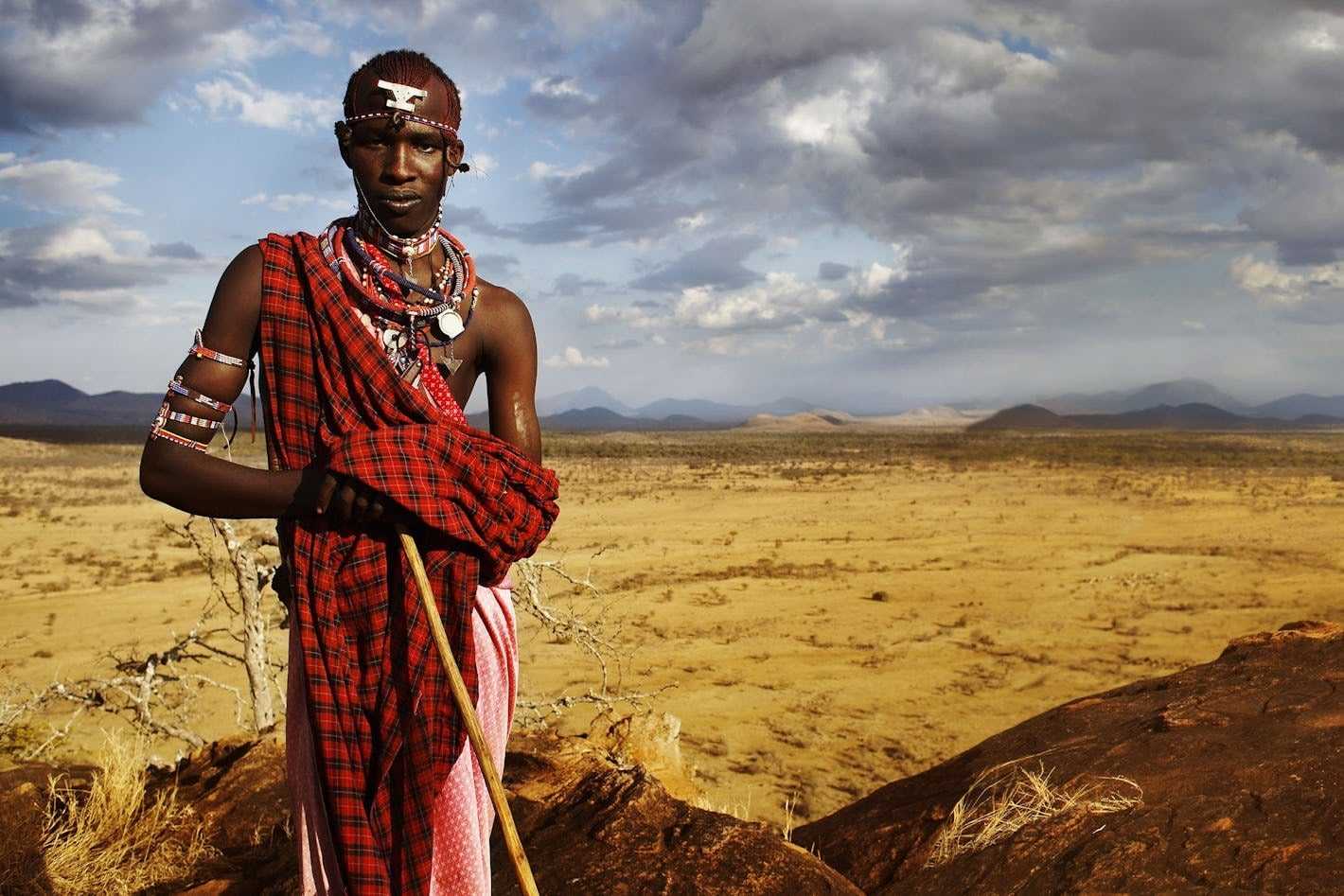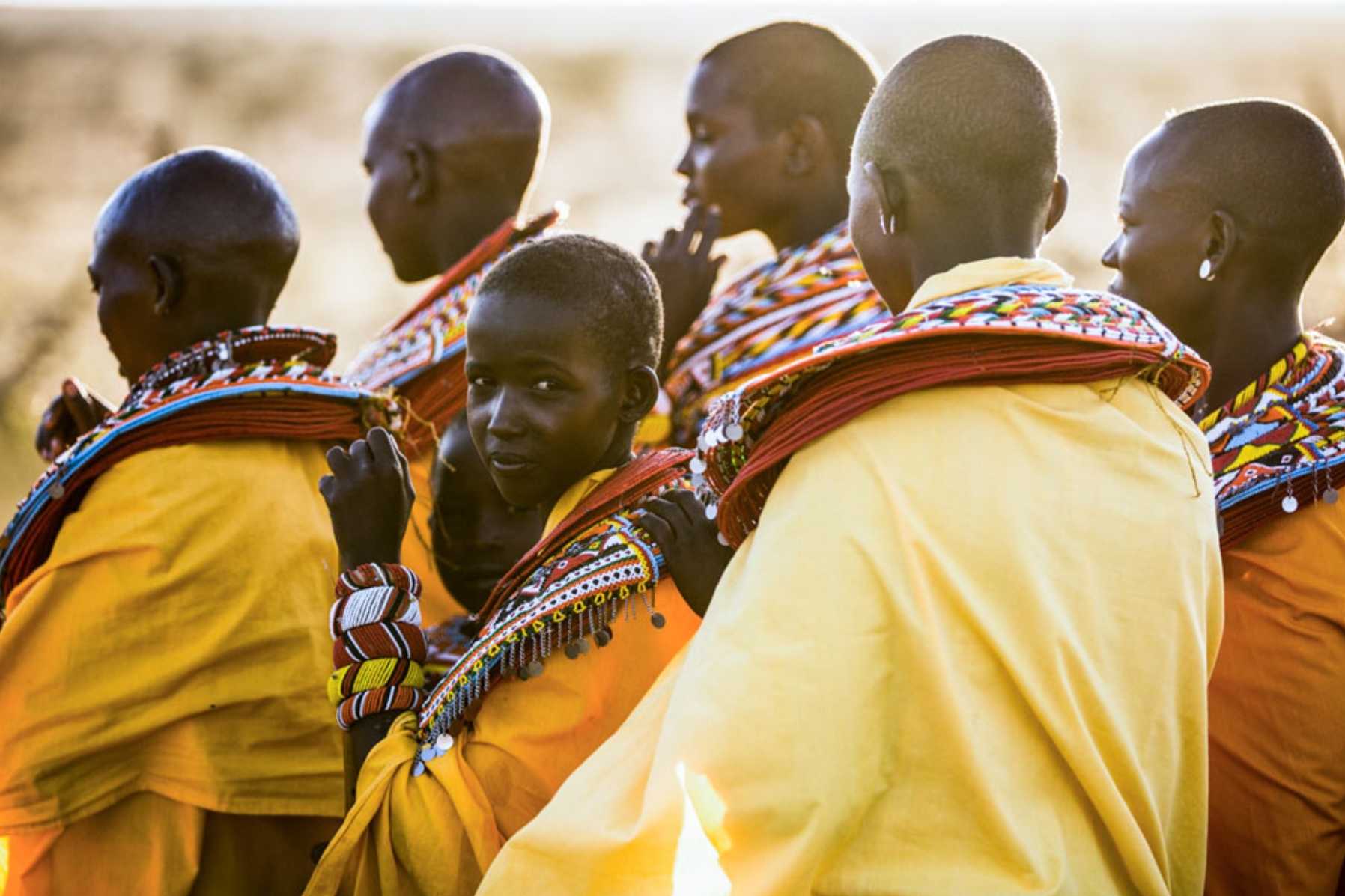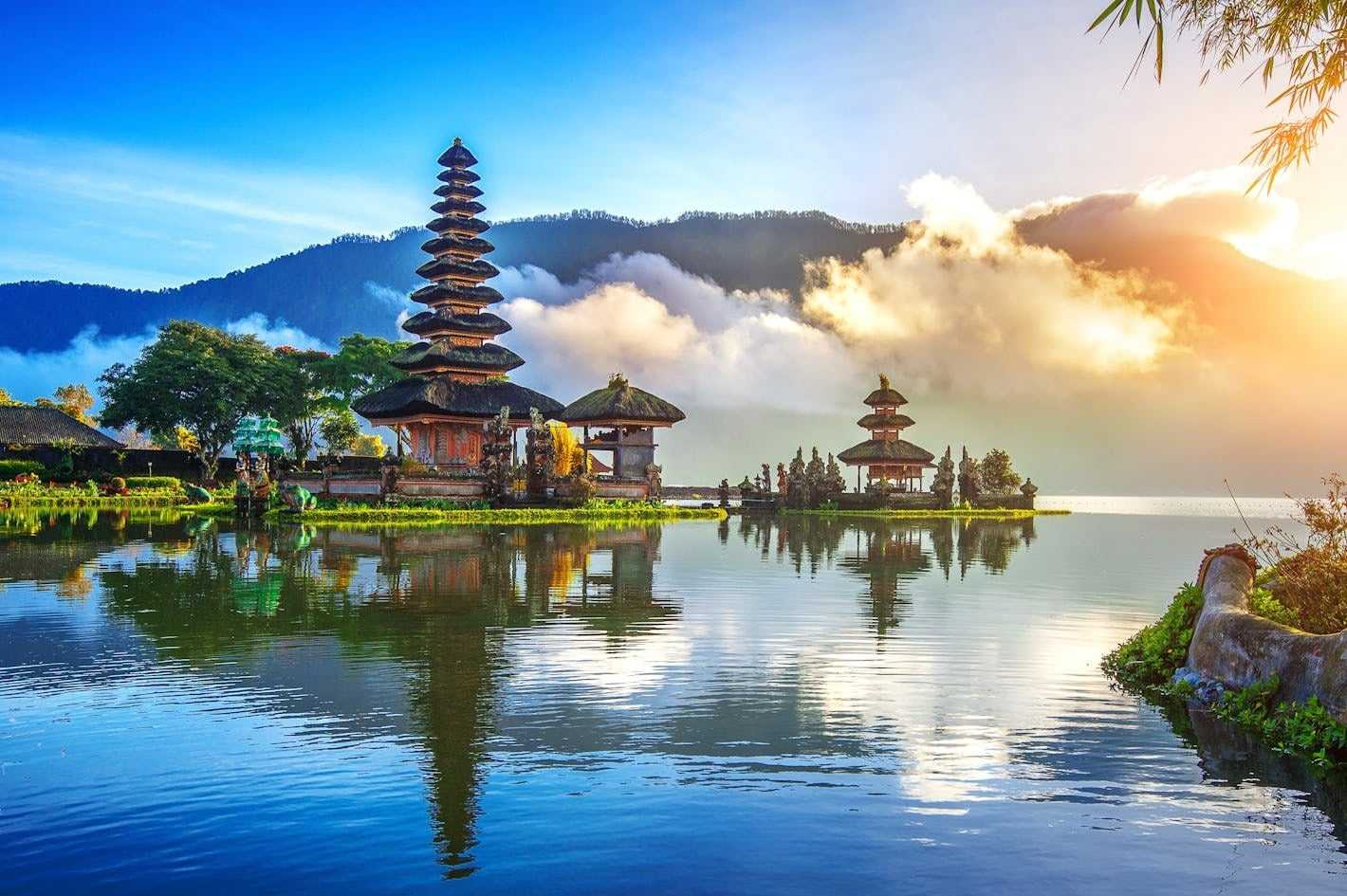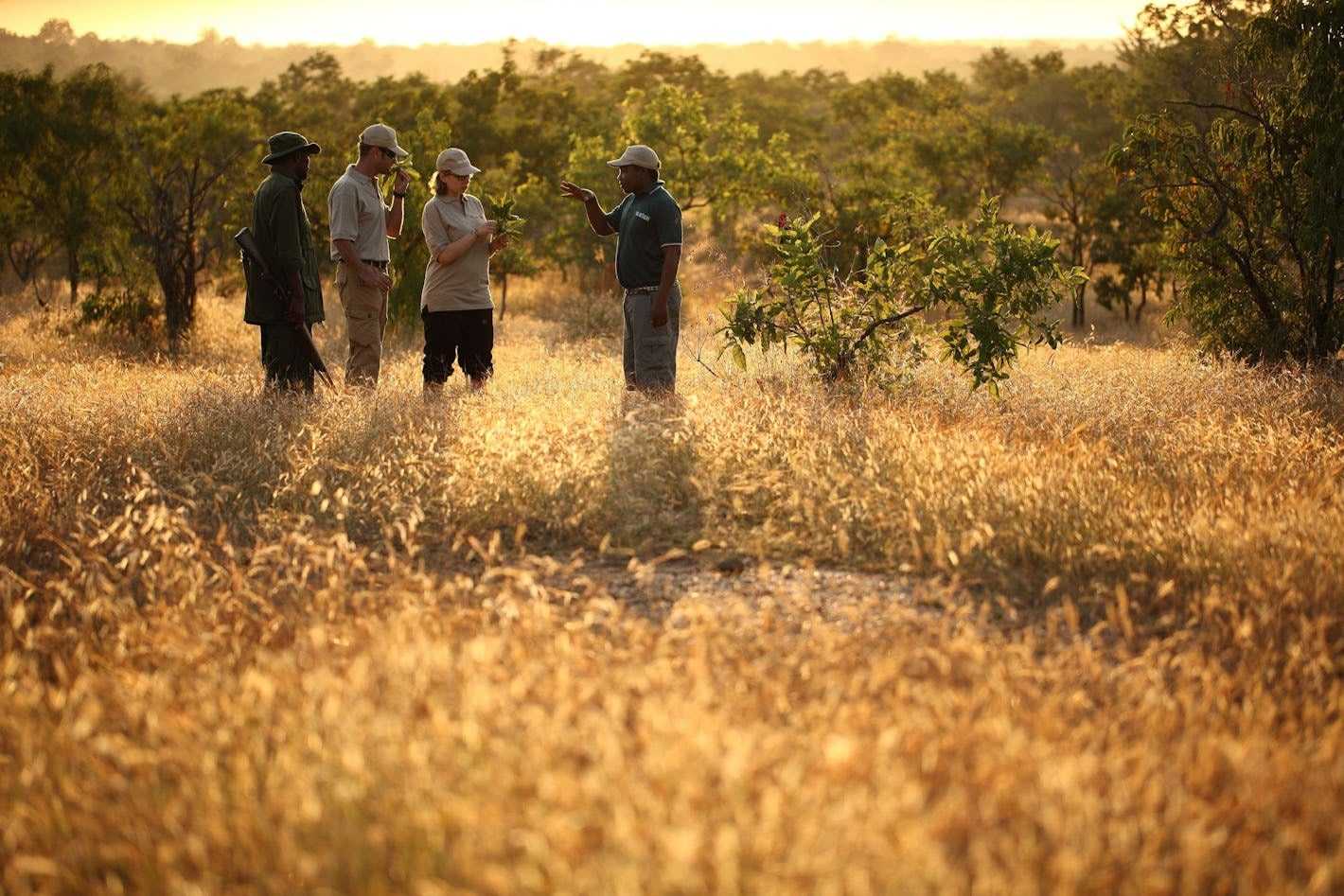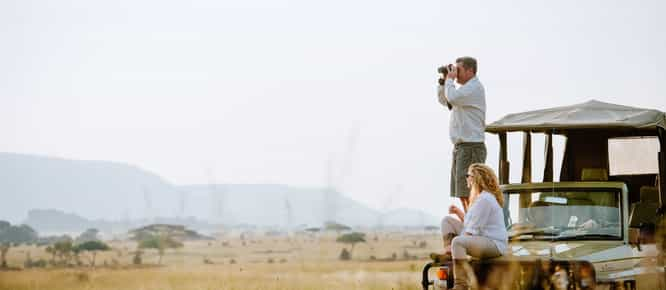Kenya is home to over 50 tribes, but perhaps the most iconic of all are the Maasai. Cutting striking figures in cardinal red ‘shukas’ and strings of beads, the Maasai warrior has become a symbol of Kenya and a traditional way of life, which they have preserved for centuries. The chance to meet a member of the Maasai tribe is a unique privilege and you’ll gain first-hand insight into their way of life. In this article, we will be taking you through everything from the history of the Maasai people to what you can expect on a visit to a homestead.
What does Maasai mean?
Essentially, ‘Maasai’ is a linguistic term that refers to speakers of the language most commonly referred to as Maa, which forms a part of the Nilo-Saharan language family. Broadly, this includes the Maasai of Kenya and Tanzania, the Samburu and the Arusha and Baraguyu tribes of Tanzania. However, in this article we will be referring to the distinctive Maasai tribe as opposed to the other aforementioned groups.
The history of the Maasai tribe
The origins of the Maasai people can be traced back to the Nile Valley in the Sudan, which they left to move southwards around the 15th century. As they settled in Kenya, the Maasai became famed and feared for their prowess with a spear and throwing clubs (orinka), enabling them to dominate considerable swathes of land and raid huge numbers of cattle. By the mid-18th century, the Maasai had taken over some of the most fertile land in central Kenya and their dominance reached all the way to the Tanga Coast in Tanzania. However, in the early 20th century, British troops drove them from these areas through military force and treaties. Huge sectors of land were appropriated by British and German administrations and, as a result, the Maasai lost about two thirds of their land and were forced to relocate to less fertile regions of Kenya and Tanzania.
Maasai homesteads
Among the great tribes of East Africa, the Maasai people have retained their traditional way of life most significantly. The Maasai live a semi-nomadic, pastoralist lifestyle, which influences everything from their dwellings to their diet. Nature is at the centre of Maasai life – even the timing for relocating and building a new homestead is influenced by nature, in this case termites eating the wood of the huts. Built in a circular or loaf-like shape, the huts (known as manyatta) are constructed from wood, grass, mud and cow dung by the women of the tribe. Inside, the hut is split into two rooms, one with an earthen stove, which is used for cooking and sleeping, and the other for housing cattle in order to keep them safe. The huts are built within a larger kraal, which consists of a large circular thornbush fence (enkang), usually housing four to eight families. This forms a village, known as a ‘boma’, and it is not uncommon for several bomas to join together.

Women dressed in traditional Maasai attire
Religion
The Maasai people are traditionally monotheistic and their god is named Engai or Enkai, who is considered to be a benevolent deity and is associated with various colours. For instance, black and dark blue, found in thunder and rain, brings grass and prosperity, while red is indicative of lightning and the dry season, which brings famine. The Maasai believe that cattle was bestowed upon them by Enkai and it therefore holds a highly sacred place in their society.
Society
Maasai tribes are considered to be mostly egalitarian, meaning everyone is seen as equal, however they are still highly patriarchal. The men are broken up into age-sets, which lasts for the lifetime of its members. Between the ages of 14 and 30, male Maasai are known as moran, and live in isolation in the bush where they learn tribal customs, and develop their strength, courage and endurance. The Maasai people are highly regarded for these traits. They are able to move up in rank (each of which lasts around 15 years) from junior to senior warriors, and junior to senior elder, who are trusted to make decisions for the tribe.
For the Maasai, wealth is determined by the number of cattle and children a man has, and many have multiple wives. Cattle are central to life for the Maasai people as their diet mostly consists of meat, blood, milk and fat, as well as honey and tree bark. They drink both fresh and curdled milk, which is served in a calabash and sometimes mixed with fresh cow blood. Skins are used as bedding and to make furniture, cow bones are used to make tools, and dung helps insulate the walls of the homes. It’s only relatively recently that Maasai tribes have begun to supplement their diets with crops like maize, rice and cabbage.
Clothing
In the 1960s, the Maasai began to replace sheepskin and cattle hide clothing with what is known as shuka, bright red or plaid cloth wrapped around the body. The Maasai are also famed for their intricate beaded jewellery, which can hold varied meanings based on the colour and pattern. Prior to trade with Europeans, natural resources like clay, wood, bone, copper and brass were used to make jewellery and today, it is mostly made from glass. The making of jewellery is seen as a woman’s job within the Maasai tribe. Ear piercing and earlobe stretching is also a major part of body ornamentation in the Maasai culture and stretched earlobes are seen as a symbol of wisdom and respect. Men and women shave their heads to celebrate rites of passage as it represents a fresh start, while only the Maasai warriors are allowed to have long hair, which they wear in thin braids.

Witness the jumping dance of the Maasai people
The Jumping Dance
Within the Maasai society, music is used to mark special occasions and rites of passage. The Maasai don’t use any instruments, except for large horns in certain songs, but instead their music is made up of rhythms created by a chorus of vocalists singing the harmonies while a song leader (olaranyani) sings the melody. The result is a striking sound, supplemented by the jangling of beads as they jump and dance. The adamu or ‘jumping dance’ is one of the most well-known aspects of the Maasai tribe and something most visitors look forward to witnessing. During this ceremony, which usually marks the transition from junior to senior Maasai warriors, the men gather away from the crowd, their shouts and pounding feet punctuating the air. As they approach the gathered group, young women launch into song and the men take up their own chant in return. Throughout the ceremony, two men take turns jumping at a time, swapping out when they believe they have achieved their highest leap in an effort to win the affection of a woman. These celebrations can last for several days and offer the chance for members of different villages throughout the region to meet and assemble together.
Visiting a Maasai village
You’ll be led by a Maasai guide as you enter the village, learning about the layout and construction of the huts, before being introduced to members of the tribe. During your time at the village, you’ll hear about daily life, learn how to light a fire in the traditional way and may even be invited to enter one of the huts. It’s also likely that you will have the chance to see the ‘jumping dance’ in action and even give it a go yourself – don’t expect to do nearly half as well as the warriors who have been training for years.
Whilst visiting the village, it’s important to ask for permission before taking photos, especially of children or older members of the tribe. You’ll be taken through the market area where you’ll be able to buy hand-made items and while members of the tribe will encourage you to make a purchase, a polite ‘no thank you’ is all that’s required if you aren’t interested.
Many camps offer authentic visits to a Maasai village including Kichwa Tembo and Finch Hattons; at the latter, the guides are all Maasai warriors, adding to the experience even more. If you’re looking for a fully immersive experience, spend a night at the ‘Olpul’ Bush Camp; you’ll trek across the plans to reach your campsite where a traditional temporary Maasai camp will be constructed, before you enjoy a dinner of goat around the campfire, along with songs, blessings and a local brew.

Learn from a Maasai guide on a walking safari
The Maasai on safari
At many camps across Kenya and certain parts of Tanzania, you may have a Maasai warrior as your guide. Who else knows the land better? You could take a walk through the Ngorongoro hills, explore Laikipia on a mountain bike, foot it across the Amboselli plains or join the warriors for a morning run. Getting to know East Africa through the eyes of the Maasai is quite unlike any other safari experience and offers the chance to gain added insight into life in this unique tribe.
The Maasai in conservation
The Maasai people are known for their remarkable tracking abilities and hold generations of knowledge about the lands in which they reside, as well as the wildlife they share it with. The Maasai way of life plays a major role in the conservation of wildlife as their rotational grazing practices help maintain the health of the natural grasslands, while also ensuring the sustainable use and protection of water sources. The Maasai also help to mitigate human-wildlife conflict by using traditional methods to protect livestock and participating in compensation schemes for livestock losses, reducing any retaliation. The Maasai people work hand-in-hand with various conservation groups, assisting in the monitoring and protection of wildlife.
The Maasai have been integral for the creation of multiple conservancies, allocating large areas of land for wildlife conservation and leasing sections of land to safari operators, which in turn helps with the formation of critical wildlife corridors that connect national parks. There are many Maasai-owned conservancies on the edge of the Masai Mara National Reserve (and in other areas), which are mutually beneficial to both the wildlife and Maasai people through responsible eco-tourism. The Nashulai Maasai Conservancy was the first community-owned and run conservancy in the Masai Mara, while the Naboisho Conservancy, which was named after the Maa word for ‘coming together’, reflects the collaborative effort between Maasai landowners, conservation organisations and tourism partners.
The Maasai are irrevocably intertwined with the past and present of Kenya, its wildlife and natural spaces. The chance to visit a Maasai village and learn about their way of life is a privileged experience that few ever get and a worthwhile part of any trip to Kenya. If you’re looking for a truly authentic perspective, we’ll happily point you in the right direction.
